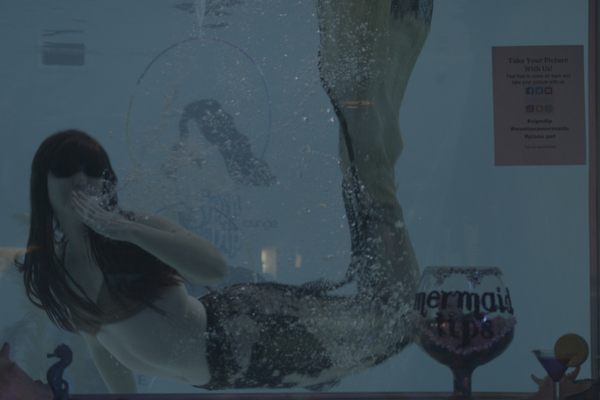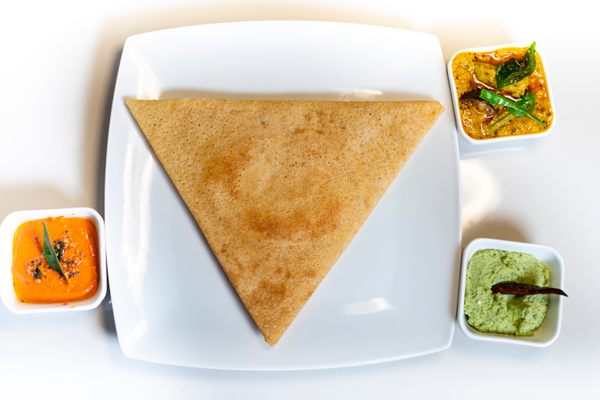Why So Many Bars Are Named After Cocks
Londoners once loved an ale whose key ingredient was a rooster.

On February 2, 1663, after a long day of business meetings, the celebrated diarist Samuel Pepys and his colleague and friend John Creed “turned into a house and drank a cup of Cock ale.” If the scenario of two coworkers sharing a drink at the end of the day seems familiar, the beverage Pepys and Creed enjoyed does not. The key ingredient in cock ale, which was popular in 17th- and 18th-century England, was a rooster.
Pepys was a great fan of the stuff and frequented several “cock ale houses” in London, including ones on Fleet Street, Bow Street and Threadneedle Street. Cock ale, like other kinds of ale and beer in this period, was also prepared at home by women, and contemporary cookbooks include numerous recipes. Hannah Woolley’s The Accomplish’d Lady’s Delight (1670) called for placing a boiled cock in eight gallons of ale, along with raisins, dates, nutmeg, mace, and sack (fortified wine).
While people seem to have genuinely liked the taste of cock ale, it was particularly valued for more medicinal qualities. Depending on who made it and where, cock ale was seen as a warm and nourishing elixir that could alleviate tuberculosis, or a “provocative” drink, a kind of early Viagra. The drink was so renowned for these properties that the modern popularity of bar and tavern names such as The Cock Tavern, The Cock and Bottle, and The Famous Cock can be traced back to cock ale.
The perceived healing powers of cock ale are part of a long history of using chicken as medicine. In Ornithology, a massive work published in 1600, the Italian naturalist Ulisse Aldrovandi declared that “there is almost no internal or external disease that is not remedied” by chicken. Many chicken medicines—such as dissolving chicken dung in vinegar or wine for stomach pains, or placing the plucked anus of a live chicken on plague buboes—seem bizarre to modern readers. But one is very familiar: chicken soup. For more than a thousand years, physicians have touted the healing properties of chicken soup. Chicken broth was believed to be easily digestible. It heated and fortified the body.

Cock ale that was produced at home by women was lauded for these nourishing and healing qualities. English men and women thought it ideal for invalids, especially those suffering from consumption (tuberculosis), while recipe books described cock ale as a “restorative Drink, which contributes much to the Invigorating of Nature” and “very pleasant.”
But when Samuel Pepys and his peers visited cock ale houses, they were generally not trying to cure tuberculosis. In commercial establishments, the invigorating properties of cock ale took on sexual connotations.
In Richard Ames’s ribald poem The Bacchanalian Sessions (1693), the god Bacchus stages a disputation between drinks—including various wines, beers, and ales, as well as coffee, tea, and chocolate. Each beverage explains why it’s best. Cock Ale’s argument is that it is the drink of choice for lovers. It claims to be:
… belov’d by the Sparks of the Town,
And their Mistresses too, who ‘fore Wine me prefer,
When they meet at a House very near Temple bar
The “House very near Temple bar” was Samuel Pepys’ favorite Cock Ale House on Fleet Street, and according to Ames, it was also a popular site for assignations.
An anonymous satirical pamphlet from 1674, The Women’s Petition Against Coffee, also portrays cock ale as an aphrodisiac. In the petition, “several Thousands of Buxome Good-Women” complain that drinking coffee makes men impotent (they “fall down flat before us”) and call for a return to “Lusty nappy Beer, Cock-Ale, Cordial Canaries, Restoring Malago’s, and Back-recruiting Chocholet.”

The notion that cock ale was sexually stimulating is linked to its healing reputation, since both relied on cock ale as a “Restorer of decay’d Nature.” But it also comes from cocks’ reputation as hyper-masculine birds. In his Ornithology of 1678, Francis Willughby describes the cock as “a most salacious bird” prone to “the immoderate use of Venery,” and also notes that cocks are “very couragious and high spirited birds, that will rather die than yield.” This latter quality made cock fighting a popular sport, and taverns were common venues. Cocks were renowned for their sexual and fighting prowess; the qualities that made drinking their flesh an aphrodisiac also made them great sporting animals.
The Cock Ale House on Fleet Street where Samuel Pepys spent so many happy hours still exists. The current pub, Ye Olde Cock Tavern, is across the street from the original building, and a golden cock hangs over the door. Cock ale is no longer on the menu. Neither is it served at The Cock Tavern, The Cock and Bottle, or The Famous Cock. But the large number of pubs with cock in their names and roosters on their signs demonstrate that this long-forgotten beverage has left its mark on London.
Gastro Obscura covers the world’s most wondrous food and drink.
Sign up for our email, delivered twice a week.



























Follow us on Twitter to get the latest on the world's hidden wonders.
Like us on Facebook to get the latest on the world's hidden wonders.
Follow us on Twitter Like us on Facebook